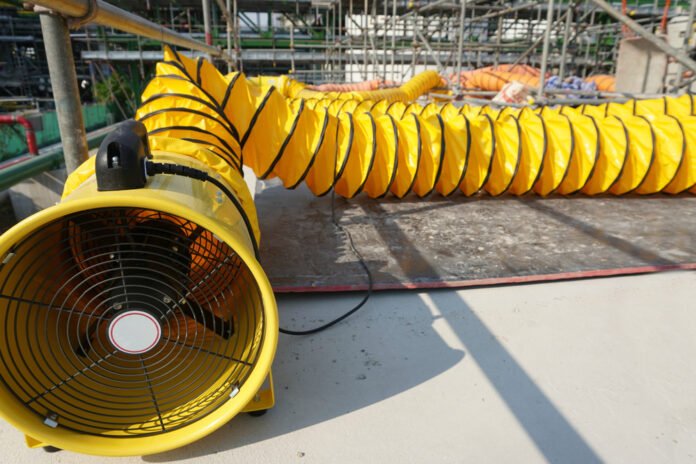Welcome, dear readers, to a fascinating discussion about innovating our home environments. Have you ever walked into your home on a winter night and thanked your heating system for keeping your living space warm and cozy? Or sighed in relief as you stepped into your cool home, escaping the scorching summer heat? If your answer is “Yes,” then you know the importance of an efficient home heating, ventilation, and air conditioning system (HVAC). But, have you ever wondered what keeps these systems running smoothly? Today, we will venture into the realm of flexible ducting systems, a vital component of HVAC systems, and explore their advantages.
Often overlooked, but incredibly integral to the functionality of HVAC systems, flexible ducting plays a pivotal role in maintaining the comfort and health of our homes. A fundamental shift is happening within building design and construction industries as they begin realising the power of flexibility. In this context, we’re zero-ing in on how flexible ducting is changing the game in HVAC applications, providing unparalleled efficiency and adaptability.
This short yet enlightening exploration will walk you through the world of flexible ducting—what they are, why they’re being widely adopted, their pros and cons, and much more. Whether you are an architect, a home-improvement enthusiast, or someone contemplating a renovation, this piece will provide valuable insights.
Table of Contents
Understanding Flexible Ducting
Before we move any further, it’s essential to understand what flexible ducting is. As the name suggests, flexible ducts consist of bendable tubing that carries air from your HVAC-system to all corners of your home. Unlike traditional rigid ducts crafted from sheet metal, flexible ducts offer increased adaptability thanks to their material composition—usually a plastic spiral wire encased in flexible plastic or polyester.
These nifty design tools are increasingly finding favor in residential and commercial HVAC applications due to their customizable nature and easy installation processes. Unlike rigid ducts that require expert installation and can become a nightmare during home improvement projects, flexible ducts can be maneuvered around obstacles with ease.
Moreover, the functional maintenance of flexible ducting provides the added advantage of eliminating the problems associated with ‘thermal leaks.’ These occur within the dwelling due to ineffective insulation, leading to energy inefficiency, but more on that later.
Why flexible ducting?
Now the question arises—why exactly is flexible ducting scoring over its rigid counterpart? What makes it the preferred choice for HVAC installers and homeowners alike? The answer lies in its versatility, cost-effectiveness, and energy efficiency.
Flexible ducts are a perfect fit for spaces where traditional ducting systems wouldn’t reach. Because of their ability to bend and flex, these ducts can be easily fit into tight and angular spaces without causing any disruptions or damage. This flexibility also means they’re easy to install, saving on professional labor costs.
An equally significant advantage of flexible ducting is its potential in improving overall energy efficiency. Rigid ducting systems often lose heat or cool air due to thermal leaks at the seams. In contrast, the unique construction of flexible ducts helps minimize these losses, conserving energy and lowering your utility bills.
Navigating Through Installation And Maintenance
Installation and maintenance are significant considerations when opting for any HVAC ducting system. In the case of flexible ducting, these processes are not only more straightforward but also time and cost-effective.
Given their flexible nature, these ducts can be effortlessly maneuvered around obstacles, eliminating the need for extra fittings required in rigid duct systems. They can easily be cut to size, providing a perfect fit for your space.
Flex ducts are also typically lined with insulation, which not only aids in energy conservation but also reduces the noise produced when air flows through the ducts. However, it is essential to conduct regular inspections and maintenance checks to ensure optimal performance, as flex ducts are prone to damage by severe temperature fluctuations and pests.
Weighing The Pros And Cons
Like anything else, flexible ducting systems come with their share of pros and cons. On the plus side, they offer ease of installation, versatility, cost-effectiveness, and energy efficiency. They also provide quieter operation compared to metallic ducts, a critical factor for homeowners seeking tranquility.
However, on the flipside, their flexibility can sometimes work against them. Incorrectly installed or unsupported flexible ducting can sag or get crushed under weight, hampering airflow. Flex ducts are also more susceptible to punctures and damage by pests or harsh weather conditions.
Making The Right Choice
At the end of the day, the choice between flexible and rigid ducting depends on your specific requirements, be it for a new construction or an upgrade to your existing HVAC system. The versatility and overall benefits of flexible ducting make it an enticing option, especially for residential applications. Nevertheless, it’s essential to consider professional installation and regular maintenance to ensure the longevity of your ducting system.
Conclusion
There’s no doubt that flexible ducting systems have made significant strides in revolutionizing HVAC applications. Their versatility, easy installation, and potential for energy conservation offer much-needed flexibility in today’s fast-paced construction scenario. But, like any other component of your home environment, these innovative tools require careful consideration and meaningful engagement.
Flexible ducting may not be the perfect fit for everyone, and that’s completely alright. As homeowners, architects, or designers, the power to choose ultimately lies in our hands, backed with relevant information explored in this article. And remember, regardless of whether you’re turning up the heat or chilling out, there’s a hardworking system quietly making it all possible in the background!








